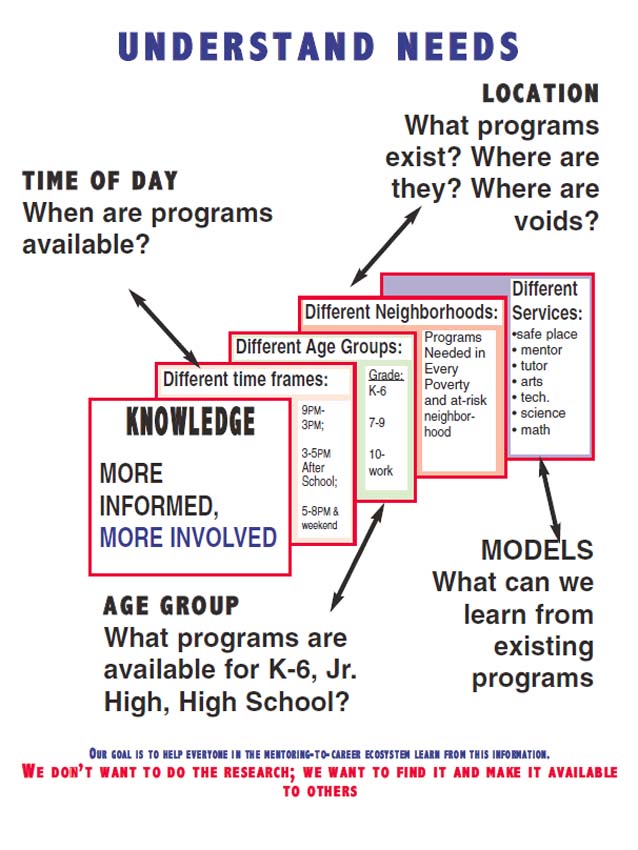
As you view information on this website you may say "That's too old." Yes. Much of this was created between 1993 and 2015. Yet it focuses on solving complex problems that still exist 30 years after we formed the Tutor/Mentor Connection in Chicago. Furthermore, most people have never seen this information. Thus, it is NEW to them. Take a look. Decide if you find the ideas useful.
It took Thomas Edison more than 1000 tries before he invented a working light bulb. It will take extensive learning, innovation and effort to build strategies that reach youth in all poverty neighborhoods with programs that help more move successfully from birth to work.
Everyone who visits this web site is embarking on a journey of learning. The longer you stay involved the more you will know.
Visit the getting started page and take a tour of this website.
Then, to help you get started, you can view blog posts by interns who have worked with the Tutor/Mentor Connection since 2006. If you read some of these you'll see they all start the same way, with a conversation with Dan Bassill, founder of the T/MC and president of Tutor/Mentor Institute, LLC, formed in July 2011.
If you read later articles written by these students, you'll see a growth in their understanding and an effort to share what they know with others. At this page you can see a list of visualizations. This page shows a wide range of strategy presentations done by interns. This blog focuses on work done by Interns since 2006.
Listen to the podcasts created using GoogleNotebookLM in these articles. These demonstrate the type of discussions about the ideas and strategies shared on our blogs and this website that the T/MC and T/MI hope to inspire among thousands of people.
This is a journey we hope people throughout the USA and the world will take. Start your reading by looking at an article written by Michael Romaine, a Volunteer who joined T/MC in 2010 - Thinking like Google



